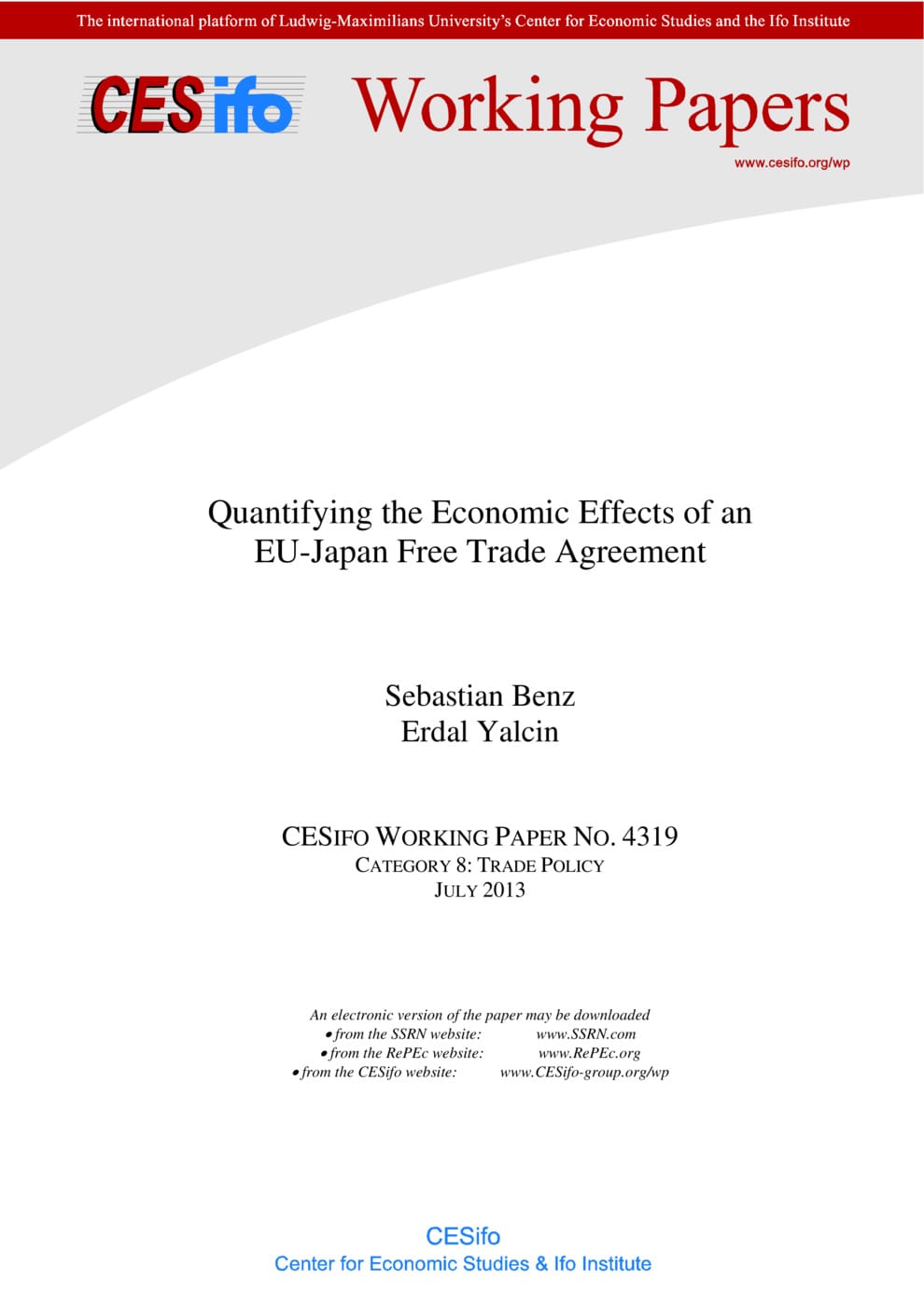Quantifying the Economic Effects of an EU-Japan Free Trade Agreement
CESifo, Munich, 2013
CESifo Working Paper No. 4319

The European Union and Japan have recently launched negotiations about a bilateral free trade agreement as means of economic stimulation, with trade as a driving force to create growth and wealth. Since customs duties are already low, the success of the liberalization process hinges on the potential elimination of non-tariff barriers. The purpose of this paper is to shed light on two possible liberalization scenarios, a less ambitious and a comprehensive trade liberalization. In contrast to classical studies our paper builds on the modern trade literature, accounting for the dominance of intra-industry trade between the two economies and the existence of heterogeneous firms. Furthermore, we model a search-and-matching labor market allowing us to quantify employment effects of trade liberalization. We find that a comprehensive liberalization increases Japanese GDP by 0.86 per cent, whereas the EU only experiences an additional 0.21 per cent of real GDP growth. Most of the growth in real GDP is due to firms’ efficiency gains, while unemployment is only reduced by a small amount. Other world regions experience small reductions of GDP due to trade diversion effects.
Trade Policy
Empirical and Theoretical Methods